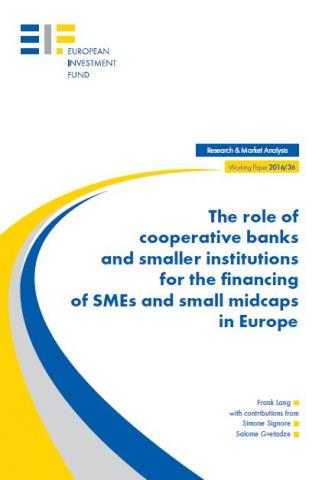On the basis of the recent capital increase of the Investment Fund (EIF), the EIB Group has envisaged to increase lending to SMEs while broadening the range of intermediaries through which it operates, including new financial and non-conventional intermediaries such as smaller regional banks and more specialist financing institutions such as SMEfocussed leasing entities, which have a particular focus on smaller SMEs and start-ups. In order to contribute to this objective, a new window under the EIB Group Risk Enhancement Mandate (EREM)4 is in the final phase of being set up, i.e. the “Cooperative Banks & Smaller Institutions” (CBSI) instrument.
The CBSI instrument particularly targets small financial intermediaries such as small leasing institutions, small cooperative banks and other smaller banks with local/regional focus, niche banks5 and non-bank financial institutions. This EIF Working Paper shows that such institutions are key players for SME financing in Europe. Therefore, the EREM CBSI window will be dedicated to these market players, anthereby give additional and targeted support to SMEs.
In this paper, we provide background information on the market segment of smaller bank institutions and cooperative banks. However, on European level, there is more information available on cooperative banks than on “smaller institutions” in general. Therefore, we largely focus on the cooperative banking segment. We start our analysis with an overview of SME financing in Europe and the general role of banks for SMEs’ access to finance (Chapter 2). We then look at the sub-segment of smaller institutions (Chapter 3). The main part is dedicated to the specific characteristics of cooperative banks (Chapter 4), the cooperative banking sector in Europe (Chapter 5) and their importance for SME financing (Chapter 6). Finally, we compare key elements of the EREM CBSI window with our findings (Chapter 7) and draw conclusions (Chapter 8).
It should be noted that this text is not to be seen as a typical “market analysis”, as there is no “market” for cooperative banking (and/or small institutions), formed by a cooperative banking supply side and a demand for cooperative banking products. Rather, the market consists of banking products in general, and cooperative banking forms part of it. Hence, we will not (as in “gap analyses”) compare supply and demand, but rather look at the reasons to pay particular attention to cooperative banking and to treat it to a certain extent differently than other market segments.
